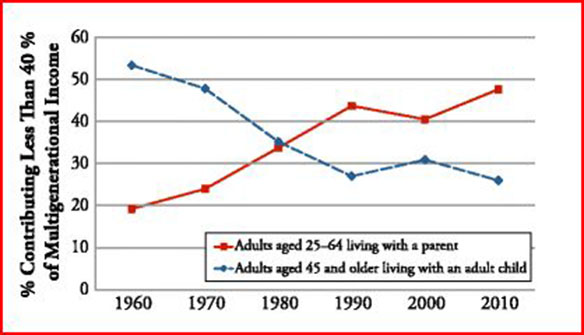Repeatedly at Sociological Images, we’ve offered data showing that the middleclassisshrinking. The rich are getting richer, while a rising percentage of Americans are having trouble making ends meet. One measure of this is the number of households that include both adults and their adult children. About 12 percent of 25- to 44-year-olds lived with their parents in 1960, that dropped to nine percent by 1980 and, in 2010, topped out at 17 percent. Almost one in five adults were living with their parents at the turn of this decade.
There are two scenarios, here, however. One indicates the decreasing financial well-being of the elderly: Parents move in with their children because they can’t afford to live alone, perhaps after retirement. The other indicates the decreasing financial well-being of young and mid-life adults: Children are moving in with their parents because they can’t get a good start to life.
It turns out that the first scenario is actually on the decrease, while the latter is on the increase. The rise in co-residence is a consequence of the failure of our economy to integrate young people into jobs that pay a living wage. Literally, a growing number of Americans—both young people and those in mid-life—can’t afford to leave the nest. And, no, this didn’t start with the recession, it started in the ’80s.

We’ve done a decent job trying to ensure that the elderly don’t live in poverty, it’s time to start working on making sure the rest of America doesn’t either.
This post originally appeared onSociological Images, a Pacific Standard partner site.



